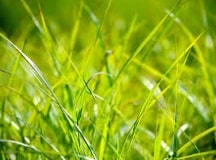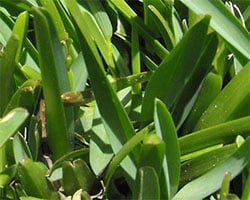 The notion of grama comes from the Latin word gramĭna , which is the plural of gramen . Grass is a plant that is part of the family group of grasses , characterized by its creeping and cylindrical stem, its nodes, its short leaves and its flowers organized in spikes.
The notion of grama comes from the Latin word gramĭna , which is the plural of gramen . Grass is a plant that is part of the family group of grasses , characterized by its creeping and cylindrical stem, its nodes, its short leaves and its flowers organized in spikes.
In the broadest sense of the concept, grass is called grass : the grasses that are used to cover the ground. Grama, in this framework, can be synonymous with lawn , grass or grass .
The grass usually has an ornamental purpose . That is why it is planted in gardens, parks and other spaces. Furthermore, in the field of sports , grass constitutes an essential part of the terrain or field where the activity of various disciplines takes place.
In tennis , soccer and golf , to name a few cases, grass care is very important since, if the grass grows unevenly or is very high, the ball will not roll or bounce normally.
It is important to mention that, as part of the grasses, the species that are called grass are angiosperms (they have closed carpels), phanerogamous (their reproductive organs are visible and have the shape of a flower) and monocotyledons (their embryo has a single cotyledon). .
The Royal Spanish Academy ( RAE ), in its dictionary, refers to certain specific types of grass. Northern grass , for example, is a perennial plant with a creeping root that is used in the field of medicine. The meadow grass or sweet grass , for its part, stands out for its fragrance.
Although grass is so useful in the field of gardening for the composition of lawns, it is a species that has medicinal properties worth mentioning, such as its remineralizing, anti-inflammatory and diuretic action. One of the most notable features of grass is its high potassium content; Thanks to this, it is such an effective purifying agent.
Other benefits of grass include antihypersensitive, hypoglycemic, cholagogue and hepatoprotective properties. As mentioned above, it is thanks to the potassium present in its composition, its potassium salts, that this plant is ideal for purifying the body and achieving a diuretic effect. Precisely, it is indicated for the stimulation of urine with the purpose of eliminating toxins through it.
For people who need to normalize their blood sodium levels, the potassium that grass provides is of great help. Specialists recommend including it in the diet, along with other foods rich in potassium.
 Grass is also used to treat and prevent urinary tract infections in cases of urethritis, prostatitis, cystitis and ureteritis. Fluid retention and edema are other problems that can be reduced through its consumption. It is sometimes combined with other species to prevent kidney stones or to reduce the pain caused by renal colic.
Grass is also used to treat and prevent urinary tract infections in cases of urethritis, prostatitis, cystitis and ureteritis. Fluid retention and edema are other problems that can be reduced through its consumption. It is sometimes combined with other species to prevent kidney stones or to reduce the pain caused by renal colic.
Although grass is not a plant with many contraindications, it does have them and that is why it is necessary to mention them. Of course, disorders can be completely avoided through moderate consumption. Let's look at some of them below:
* since grass has a pronounced diuretic action , it is not recommended in case of heart disease or high blood pressure without medical supervision, as it can lead to decompensation;
* during pregnancy it is advisable to consult with the gynecologist before starting treatment with grass, even if there are no clear indications that it may be counterproductive;
* cattle can become poisoned by consuming grass because in its aerial parts there are cyanogenic heterosides;
* You should not consume more than its medicinal part, that is, its rhizome .
